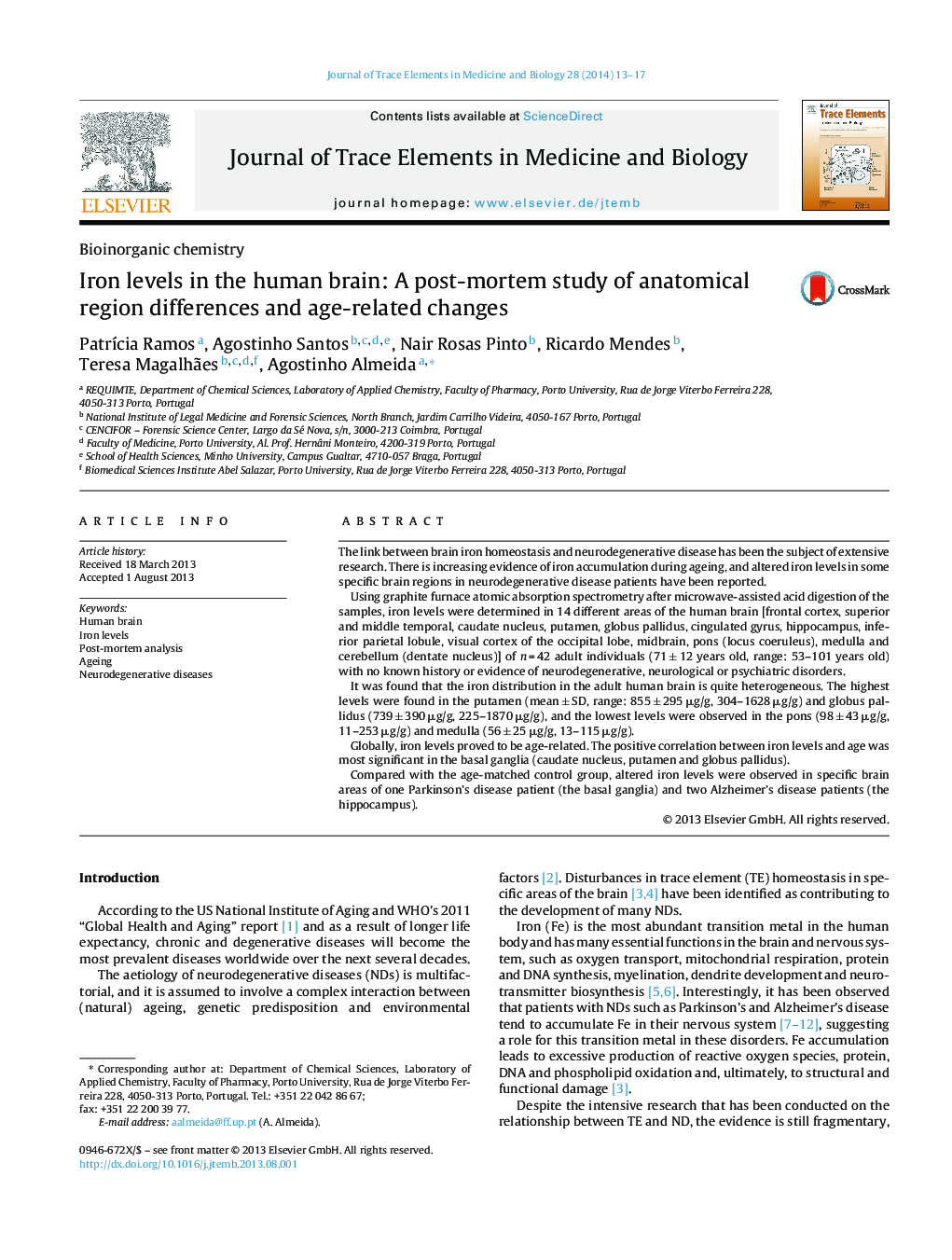| کد مقاله | کد نشریه | سال انتشار | مقاله انگلیسی | نسخه تمام متن |
|---|---|---|---|---|
| 1226650 | 968316 | 2014 | 5 صفحه PDF | دانلود رایگان |
The link between brain iron homeostasis and neurodegenerative disease has been the subject of extensive research. There is increasing evidence of iron accumulation during ageing, and altered iron levels in some specific brain regions in neurodegenerative disease patients have been reported.Using graphite furnace atomic absorption spectrometry after microwave-assisted acid digestion of the samples, iron levels were determined in 14 different areas of the human brain [frontal cortex, superior and middle temporal, caudate nucleus, putamen, globus pallidus, cingulated gyrus, hippocampus, inferior parietal lobule, visual cortex of the occipital lobe, midbrain, pons (locus coeruleus), medulla and cerebellum (dentate nucleus)] of n = 42 adult individuals (71 ± 12 years old, range: 53–101 years old) with no known history or evidence of neurodegenerative, neurological or psychiatric disorders.It was found that the iron distribution in the adult human brain is quite heterogeneous. The highest levels were found in the putamen (mean ± SD, range: 855 ± 295 μg/g, 304–1628 μg/g) and globus pallidus (739 ± 390 μg/g, 225–1870 μg/g), and the lowest levels were observed in the pons (98 ± 43 μg/g, 11–253 μg/g) and medulla (56 ± 25 μg/g, 13–115 μg/g).Globally, iron levels proved to be age-related. The positive correlation between iron levels and age was most significant in the basal ganglia (caudate nucleus, putamen and globus pallidus).Compared with the age-matched control group, altered iron levels were observed in specific brain areas of one Parkinson's disease patient (the basal ganglia) and two Alzheimer's disease patients (the hippocampus).
Journal: Journal of Trace Elements in Medicine and Biology - Volume 28, Issue 1, January 2014, Pages 13–17
